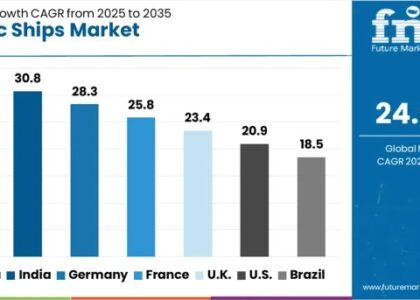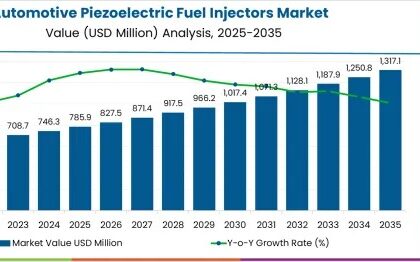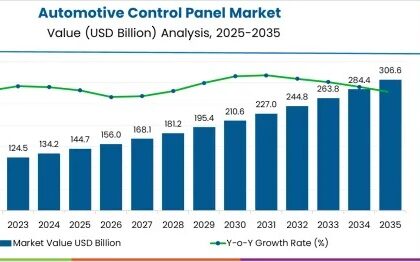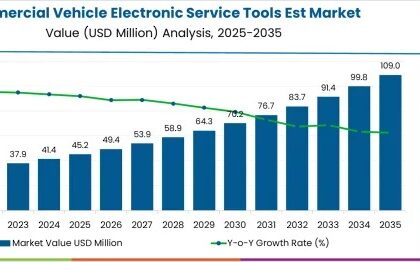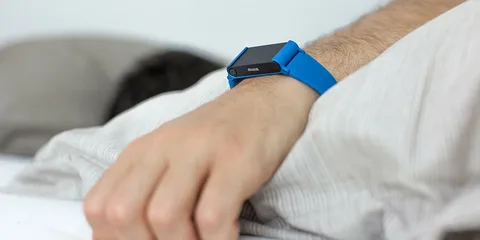
The global wearable sleep tracker market is set for substantial growth over the next decade, with an anticipated valuation of USD 1,583.20 million in 2024. Trends indicate that the increasing prevalence of sleep dysfunctions is a primary driver behind this market expansion, as more individuals turn to sleep trackers to monitor their sleep patterns and identify potential triggers.
As sleep disorders become more widespread, the integration of sleep-tracking technology into wearable devices is significantly boosting the adoption of these trackers. This technological convergence enhances user convenience and accuracy, making wearable sleep trackers an essential tool for those managing sleep issues.
By 2034, the market is projected to reach a valuation of USD 2,458.60 million, growing at a Compound Annual Growth Rate (CAGR) of 4.5% from 2024 to 2034. This growth trajectory underscores the increasing importance and mainstream adoption of wearable sleep tracking devices.
Get your PDF – Sample Report
As wearable sleep trackers gain prominence and mainstream acceptance, industry stakeholders are poised to capitalize on emerging opportunities to meet the evolving needs of consumers. By leveraging advancements in sensor technology, data analytics, and user-centric design, manufacturers can enhance the accuracy, reliability, and user experience of wearable sleep tracking devices.
Market Dynamics Framing the Wearable Sleep Tracker Sector:
The rise of the wearable sleep tracking device market is being supported in large part by the rising prevalence of sleep disorders and rising disposable income. Wearable sleep trackers are expected to see significant growth in the market due to their accessibility through both online and offline distribution channels, as well as their increasing popularity as fashion items in emerging nations.
The wearable sleep tracker market is not growing as quickly as it could due to the high cost associated with smart wearable devices. The sales of wearable sleep trackers are limited by the fluctuating pricing of raw materials and the growing competition in the market.
The global wearable sleep tracker market is segmented on the basis of product type into:
- Wearable Sleep Tracker Ring Devices
- Wearable Sleep Tracker Wristband and Hand band Devices
- Wearable Sleep Tracker Headband Devices
- Wearable Sleep Mask Tracker Devices
The report begins with the market definition of wearable sleep tracker, followed by definitions of different types of wearable sleep trackers and applications for which these wearable sleep trackers are used. The market dynamics section includes FMI’s analysis on key trends, drivers, restraints, opportunities and macro-economic factors influencing the growth of the global wearable sleep tracker market.
On the basis of the application, the global wearable sleep tracker market is segmented into:
- Insomnia
- Sleep Apnoea
- Others
On the basis of the distribution channel, the global wearable sleep tracker market is segmented into:
- Pharmacy and Retail Stores
- Online Sales
- Hypermarkets and Supermarkets
- Others
Customization Available – Here
Next, the report analyses the market on the basis of regions and presents forecast in terms of value for the next 10 years. On the basis of region, the global wearable sleep tracker market is segmented into:
- North America
- U.S.
- Canada
- Latin America
- Brazil
- Mexico
- Rest of Latin America
- Western Europe
- Germany
- France
- U.K.
- Spain
- Rest of Western Europe
- Eastern Europe
- Russia
- Rest of Eastern Europe
- Asia Pacific excluding China and Japan
- India
- Australia & New Zealand
- ASEAN
- Rest of Asia- Pacific excluding China and Japan
- China
- Japan
- Middle East & Africa (MEA)
- South Africa
- GCC Countries
- Rest of Middle East and Africa
In addition, we have considered Year-on-Year (Y-o-Y) growth to understand the predictability of the market and identify the growth opportunities for companies operating in the global wearable sleep tracker market.
Another key feature of this report is the analysis of key segments in terms of absolute dollar opportunity. This is usually overlooked while forecasting the market. However, absolute dollar opportunity is critical for assessing the level of opportunity that a provider can look to achieve, as well as to identify potential resources from a sales and delivery perspective for services offered by the wearable sleep tracker market. To understand the key segments in terms of their growth and performance in the global wearable sleep tracker market, Future Market Insights has developed a market attractiveness index. The resulting index will help identify the existing market opportunities in the wearable sleep tracker market.
Key Segments:
By Product:
- Wearable Ring Devices
- Wearable Wrist and Hand band Devices
- Wearable Headband Devices
- Sleep Mask Tracker Devices
By Application:
- Insomnia
- Sleep Apnea
- Others
By End User:
- Pharmacy and Retail Stores
- Online Sales
- Hypermarkets and Supermarkets
- Others
By Region:
- North America
- Western Europe
- Asia Pacific
- Latin America
- Eastern Europe
- Middle East and Africa
Get Full Market Analysis Now – Purchase The Report
About Future Market Insights (FMI)
Future Market Insights, Inc. (ESOMAR certified, recipient of the Stevie Award, and a member of the Greater New York Chamber of Commerce) offers profound insights into the driving factors that are boosting demand in the market. FMI stands as the leading global provider of market intelligence, advisory services, consulting, and events for the Packaging, Food and Beverage, Consumer Technology, Healthcare, Industrial, and Chemicals markets. With a vast team of over 400 analysts worldwide, FMI provides global, regional, and local expertise on diverse domains and industry trends across more than 110 countries.
Contact Us:
Future Market Insights Inc.
Christiana Corporate, 200 Continental Drive,
Suite 401, Newark, Delaware – 19713, USA
T: +1-845-579-5705
For Sales Enquiries: sales@futuremarketinsights.com
Website: https://www.futuremarketinsights.com
LinkedIn| Twitter| Blogs | YouTube


